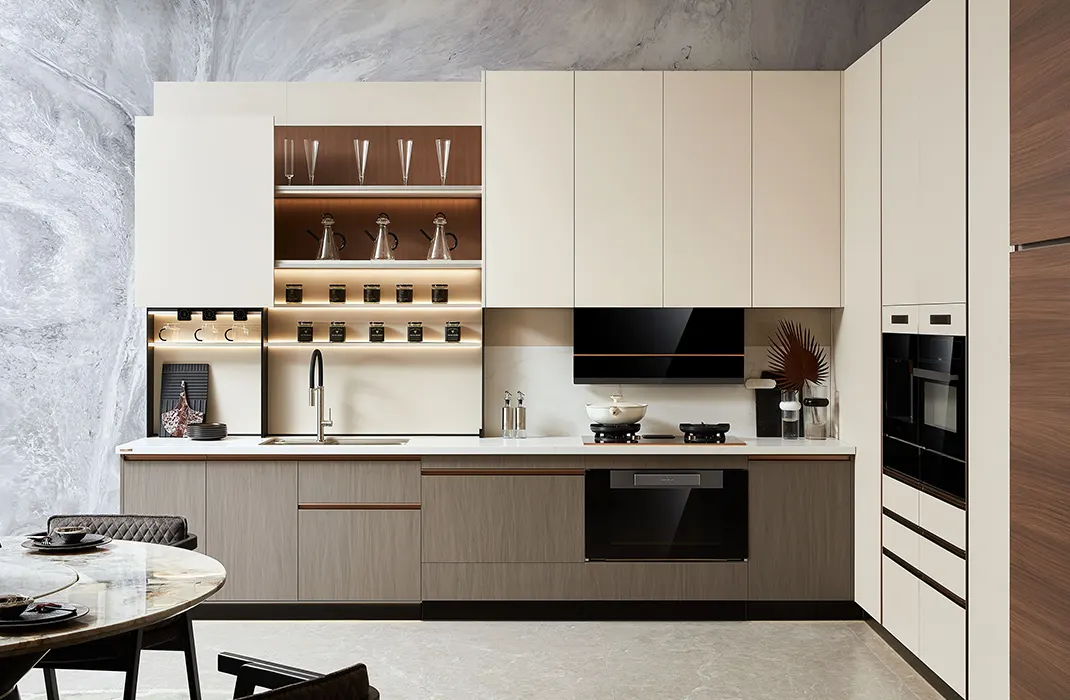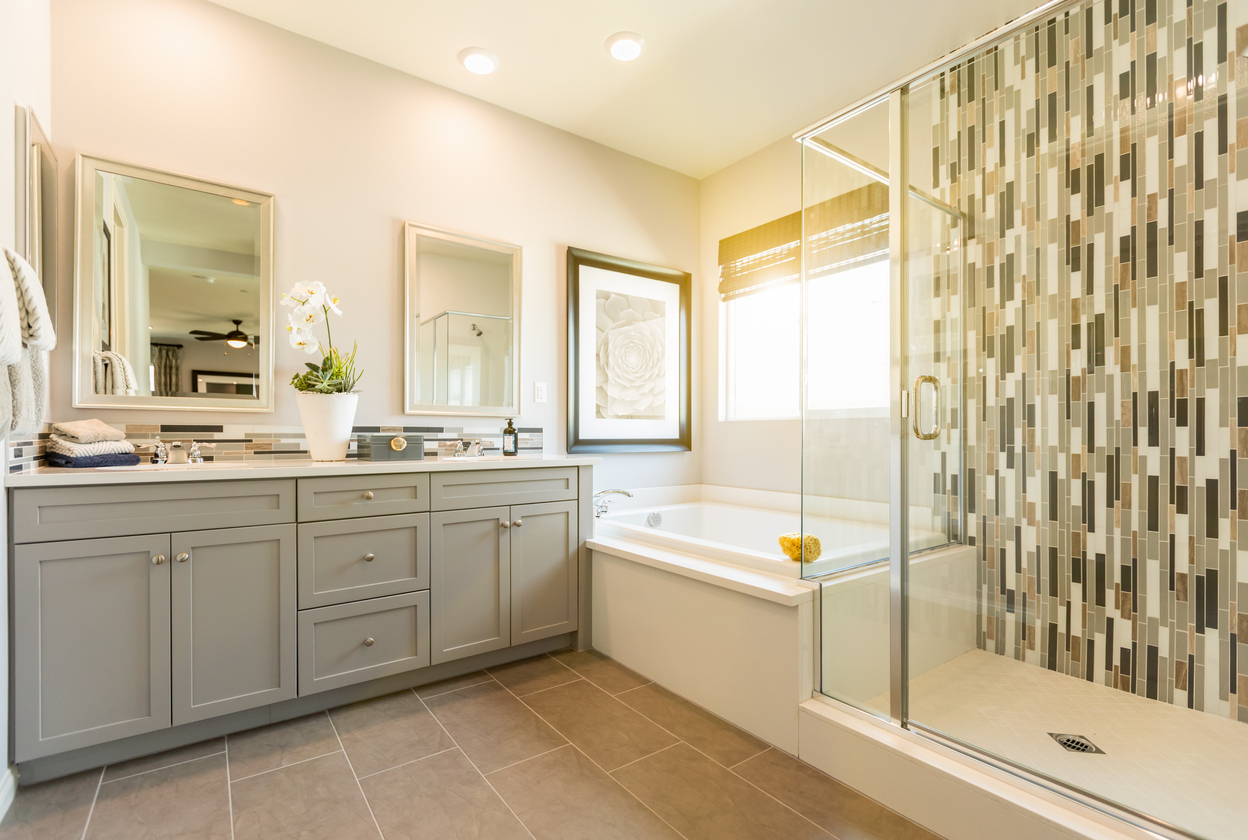The kitchen has long been regarded as the heart of the home, a space where functionality, aesthetics, and comfort converge to create a setting ideal for cooking, entertaining, and family gatherings. In recent years, however, kitchen design has evolved dramatically. With technological advancements, an emphasis on sustainability, and a desire for more personalized spaces, modern kitchen trends have emerged that are changing the way we approach home improvement. From high-tech appliances to sustainable materials and smart layouts, today’s kitchens offer more than just a place to cook—they serve as multi-functional hubs for modern living.
In this article, we will explore the new trends in kitchen design that are transforming home improvement, highlighting how they can elevate both the functionality and aesthetics of your space.
1. Smart Kitchens: The Future of Cooking
The concept of a “smart kitchen” is no longer a futuristic idea—it’s very much a reality. With the rise of smart home technology, kitchens are becoming more connected and efficient, offering greater convenience for homeowners. This shift is being driven by the need for time-saving devices, energy-efficient appliances, and the increasing integration of voice-activated systems.
Key Features of Smart Kitchens:
-
Voice-Activated Assistants: Devices like Amazon Alexa and Google Assistant can now control appliances, lighting, and even order groceries, all while you’re busy cooking. For example, you can preheat your oven, set a timer, or adjust lighting with simple voice commands.
-
Smart Appliances: From refrigerators that keep track of your grocery inventory to ovens that can be controlled remotely via smartphone apps, smart appliances are changing how we cook and manage kitchen tasks. These appliances also often come with energy-saving features, making them both functional and environmentally friendly.
-
Smart Lighting and Climate Control: Adjustable lighting that changes based on time of day or activity—such as task lighting for meal prep and mood lighting for dining—is becoming standard in modern kitchens. Additionally, smart thermostats help regulate temperature efficiently.
The integration of smart technology in kitchens not only makes cooking easier but also improves energy efficiency and creates a more personalized environment.
2. Sustainable and Eco-Friendly Materials
Sustainability continues to be one of the most important considerations in home design, and the kitchen is no exception. With an increasing focus on reducing our environmental footprint, homeowners are gravitating toward eco-friendly materials that are both durable and sustainable. These materials not only contribute to a greener planet but also add a unique, organic touch to kitchen aesthetics.
Popular Sustainable Materials in Kitchen Design:
-
Recycled Materials: Items such as countertops made from recycled glass or reclaimed wood are gaining popularity for their environmental benefits and distinctive visual appeal. These materials provide a one-of-a-kind look while helping reduce waste.
-
Bamboo and Cork: Bamboo is known for its sustainability due to its rapid growth rate, making it a popular choice for countertops, cabinetry, and flooring. Cork, harvested from the bark of cork oak trees, is another renewable material that is gaining traction for its natural beauty and eco-friendliness.
-
Energy-Efficient Appliances: In addition to using sustainable materials, the use of energy-efficient appliances is another trend that helps reduce the environmental impact of your kitchen. Choosing Energy Star-rated appliances ensures that your kitchen runs on less energy, lowering both your utility bills and your carbon footprint.
By incorporating sustainable materials and energy-efficient appliances, homeowners can create a kitchen that aligns with both their design sensibilities and their commitment to environmental responsibility.
3. Open Shelving and Minimalist Designs
In recent years, there has been a shift toward minimalist kitchen designs, characterized by clean lines, open shelving, and uncluttered spaces. This trend prioritizes simplicity and functionality, creating a sense of openness and airiness in the kitchen. Open shelving, in particular, has become a dominant feature in many kitchens, replacing traditional upper cabinets.
Benefits of Open Shelving:
-
Accessibility and Visibility: Open shelving allows for easy access to frequently used items, such as plates, glasses, and cookware. It also allows you to display your favorite kitchenware, adding a personal touch to the space.
-
Aesthetic Appeal: Open shelves create a lighter, more open atmosphere, particularly in smaller kitchens. They also allow homeowners to showcase unique items, such as artisanal plates or vintage glassware, adding character to the kitchen.
-
Customization: Open shelving offers greater flexibility in terms of layout and design. Homeowners can arrange and rearrange their shelves to suit their changing needs and aesthetic preferences.
While open shelving can create a modern and airy atmosphere, it also requires more upkeep and organization. To keep it looking clean and stylish, consider using baskets or storage bins for smaller items and rotating display pieces regularly.
4. Multi-Functional Kitchen Islands
The kitchen island has evolved from a purely functional piece of furniture to a multi-purpose hub that serves a variety of roles. In today’s kitchens, islands are not only used for food prep and cooking, but they have also become gathering places for socializing, working, and even dining. This transformation is part of the broader trend toward creating kitchens that are more versatile and accommodating of modern lifestyles.
Innovative Features of Multi-Functional Islands:
-
Integrated Appliances: Many modern kitchen islands now feature built-in appliances, such as cooktops, sinks, and dishwashers, allowing for a more efficient and streamlined workspace. Some even include mini-fridges or wine coolers to keep drinks within easy reach.
-
Storage Solutions: Islands are now designed with ample storage, including drawers for utensils, pull-out pantry shelves, and hidden compartments. This is particularly helpful in smaller kitchens, where maximizing storage is crucial.
-
Seating Areas: Islands with built-in seating have become a popular feature, providing an informal dining area or a place to gather with family and friends. Whether it’s a casual breakfast bar or a larger seating arrangement, the island has become a social space that enhances the functionality of the kitchen.
The versatility of modern kitchen islands makes them an essential component of today’s kitchen designs, combining style, utility, and social interaction in one space.
5. Bold Colors and Statement Patterns
While neutral tones have traditionally dominated kitchen design, bold colors and statement patterns are making their way into kitchens across the globe. From deep blues and forest greens to bright yellows and vibrant reds, homeowners are increasingly embracing colors that add personality and flair to their kitchens.
How Bold Colors Are Being Used:
-
Colored Cabinets: Deep, rich hues such as navy blue, emerald green, and charcoal gray are replacing the traditional white and wood-tone cabinets. These colors create a more dramatic and personalized aesthetic, while still maintaining a sophisticated look.
-
Patterned Backsplashes: Geometric and floral patterns are being incorporated into backsplashes, creating a dynamic focal point in the kitchen. Bold tiles, such as Moroccan or encaustic-style patterns, bring a touch of cultural flair and uniqueness to the space.
-
Accent Walls and Appliances: Some homeowners are opting for one accent wall painted in a contrasting color or featuring unique wallpaper designs. Additionally, colorful appliances in hues like mint green or mustard yellow are emerging as a way to add personality and break away from the standard stainless steel.
Bold colors and patterns are a way to infuse a sense of fun and creativity into the kitchen, transforming it into a space that is as visually captivating as it is functional.
6. Natural Light and Open Layouts
An emphasis on natural light has been a long-standing trend in home design, and it’s especially relevant in the kitchen. Many homeowners are opting for open, airy layouts that allow for more sunlight to flood the space, creating a bright, welcoming atmosphere.
Ways to Maximize Natural Light in the Kitchen:
-
Large Windows: Installing floor-to-ceiling windows or adding additional windows above counters and sinks ensures that natural light fills the kitchen. Skylights are also a great way to bring in more light without compromising wall space.
-
Open Floor Plans: Open layouts that connect the kitchen with living or dining areas create a seamless flow between spaces and allow for more light to penetrate throughout the home.
-
Glass Doors: Sliding or French doors that open to outdoor spaces bring the outdoors in, further enhancing the sense of openness and natural light in the kitchen.
Maximizing natural light not only improves the look of the kitchen but also promotes well-being by creating a bright, uplifting environment.
Conclusion
The kitchen has evolved from a purely functional space into a dynamic, multi-purpose area that serves a variety of roles. As technology, sustainability, and design trends continue to shape kitchen spaces, homeowners are embracing smart appliances, sustainable materials, and more personalized layouts that reflect their unique needs and lifestyles. Whether you’re interested in creating a high-tech cooking environment, incorporating eco-friendly materials, or designing a space with bold colors and patterns, the kitchen trends of today are transforming home improvement in exciting and innovative ways. These trends not only enhance the functionality and beauty of your kitchen but also ensure it remains a central hub for both daily life and entertaining for years to come.









